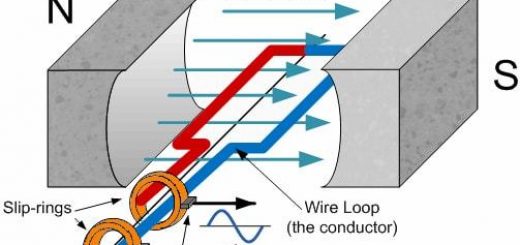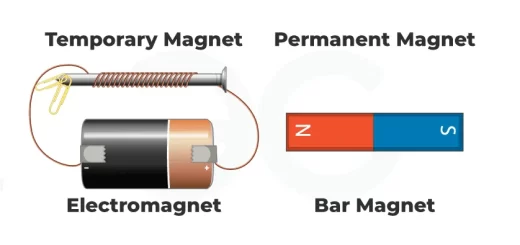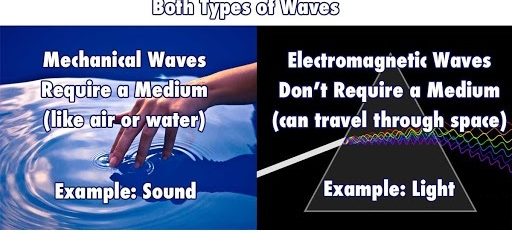Energy , Finding Kinetic energy and Potential energy of an object
Energy
It is the ability to do work , Man needs the energy to exert effort ( do work ) without energy no task can be performed , The unit of measuring energy is the Joule ( J ) which is the same as the unit of measuring work , Energy has different forms such as Kinetic energy ( K E ) and potential energy ( P E ) .
Kinetic energy ( K E )
Kinetic energy is the energy possessed by the object due to its motion , When work is done to move an object , this work is acquired by the object as kinetic energy , The unit of measuring the kinetic energy is Joule ( J ) and its dimensions are ML²T−2 .
When the kinetic energy of an object is 400 J , It means that the energy possessed by the object due to its motion = 400 J .
Finding the kinetic energy of an object
If a force ( F ) acts on an object of mass ( m ) at rest to move it at a uniform acceleration ( a ) to reach velocity ( vf ) after moving a displacement ( d ) .
Thus , vf² = vi² + 2 a d
vi =0 ∴ vf² = 2 a d , d = vf² / 2 a
Multiplying both sides by the force ( F )
∴ F d = ½ × vf² × ( F / a )
From Newton’s Second Law :
F / a = m ∴ F d = ½ m vf²
In the previous relation :
The left hand side ( F d ) represents the work done ( or the energy needed to move the object ) .
The right hand side ( ½ m vf² ) represents the form of energy into which work is converted which is the kinetic energy ( K E ) .
KE = ½ m v²
Kinetic energy is a scalar quantity because it is the product of two scalar quantities which are mass and speed squared .
Factors that affect kinetic energy of an object :
The object mass ( m ) : Kinetic energy is directly proportional to the object mass at constant speed .
Slope = KE / m =½ v²
The object speed ( v ) : Kinetic energy is directly proportional to square speed of the object at constant mass .
Slope = KE / v² = ½ m
KE = ½ m v²
On applying the brakes to stop a car moving at velocity 30 km/h , the car would slide for a distance ( d ) before stopping .
The same car would slide for a distance four times longer on applying the brakes to stop it , if the car was moving at velocity 60 km/h , F d ∝ v² .
Potential energy ( P E )
It is the energy stored in the objects because of their new positions or state , When an object is lifted up , work is done , This work is stored in the body as energy known as gravitational potential energy , The unit of measuring the potential energy is the Joule ( J ) and its dimensions are ML²T−2 .
When the potential energy of an object is 50 J , It means that the energy stored in the object because of its new position or state = 50 J .
Finding the potential energy of an object
If an object of mass ( m ) is lifted up to a height ( h ) , the work done ( W ) is determined by the relation : W = F . h , Where ( F ) is the force required to lift the object up and equals its weight ( w ) :
F = w = m g ∴ W = m g h
The work done is stored in the form of potential energy ( P E ) .
P E = m g h
Factors that affect potential energy of an object
The object mass ( m ) : potential energy is directly proportional to the object mass at constant height and free-fall acceleration , Slope = P E / m = g h .
The object height ( h ) : Potential energy is directly proportional to the object height at constant mass and free-fall acceleration , Slope = PE / h = m g = w .
The free fall acceleration ( g ) : Potential energy is directly proportional to the free fall acceleration at constant object mass and height , Slope = P E / g = m h .
Examples of potential energy
- Stored energy in a spring when compressed or elongated ( elastic potential energy ) , The spring does work to release this energy and restore its original position .
- Stored energy in an object when raised up above the ground ( gravitational potential energy ) , gravitational potential energy depends on the object position relative to the surface of the Earth .
- Stored energy in a stretched rubber band ( elastic potential energy ) , The stretched rubber band shrinks when removing the acting force to restore its original shape .
- Stored energy in electrons inside a battery ( electric potential ) , Electrons flow when the battery is connected to a closed circuit .
To lift a box of weight 450 N vertically to a height of 1 m , We need a force equal to the box weight , The work done : W = 450 N × 1 m = 450 J
When raising the same box using a ramp ( inclined plane ) 3 m long , A force less than its weight is required ( 150 N ) but for a longer displacement , The work done : W = 150 N × 3 m = 450 J .
The sum of Kinetic energy and Potential energy is called Mechanical Energy .
Mechanical Energy = Kinetic energy + Potential energy
ME = KE + PE
Physics for the environment
Most of the energy used by man comes from non-renewable resources such as Coal , Petroleum , Non-renewable resources of energy are considered as unclean resources since they produce a lot of harmful products to the environment and man health .
Because of this , there is a global trend , especially in the most industrialized countries , to used the renewable resources such as wind power and waterfalls as an energy resource to generate electricity and preserve the environment , as well .
Energy resources & forms, Potential energy, Kinetic energy & Mechanical energy
Potential energy, Kinetic energy & Law of conservation of mechanical energy




